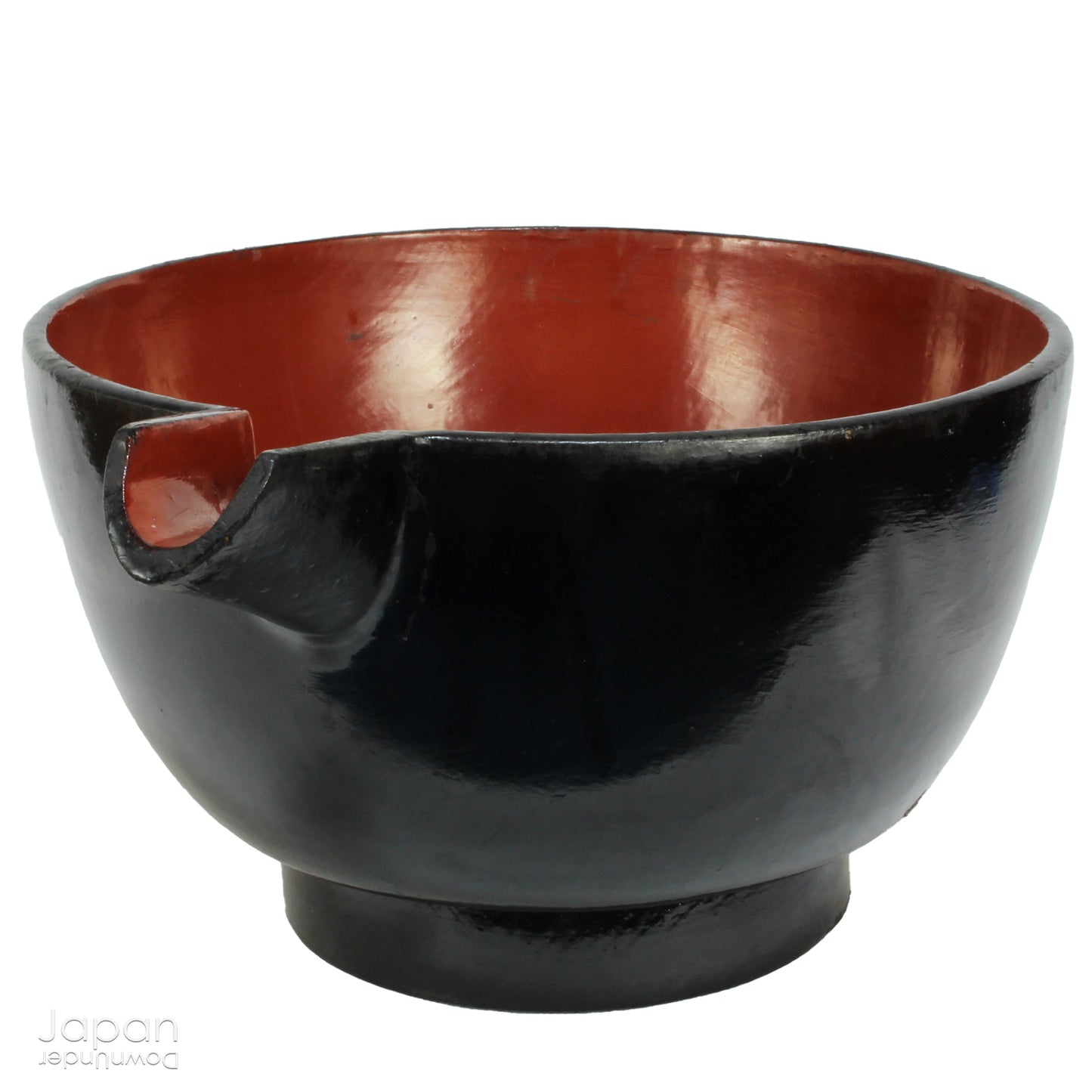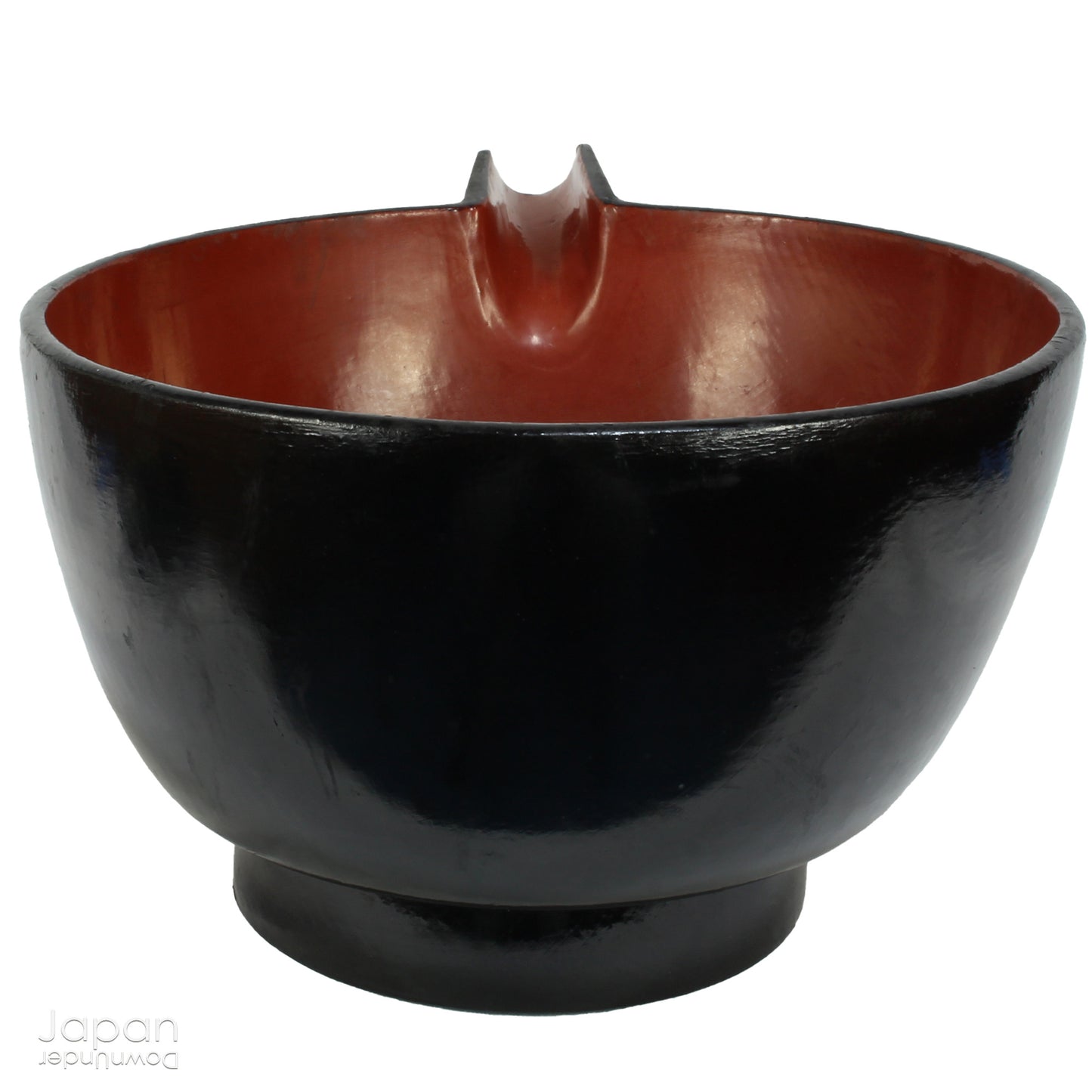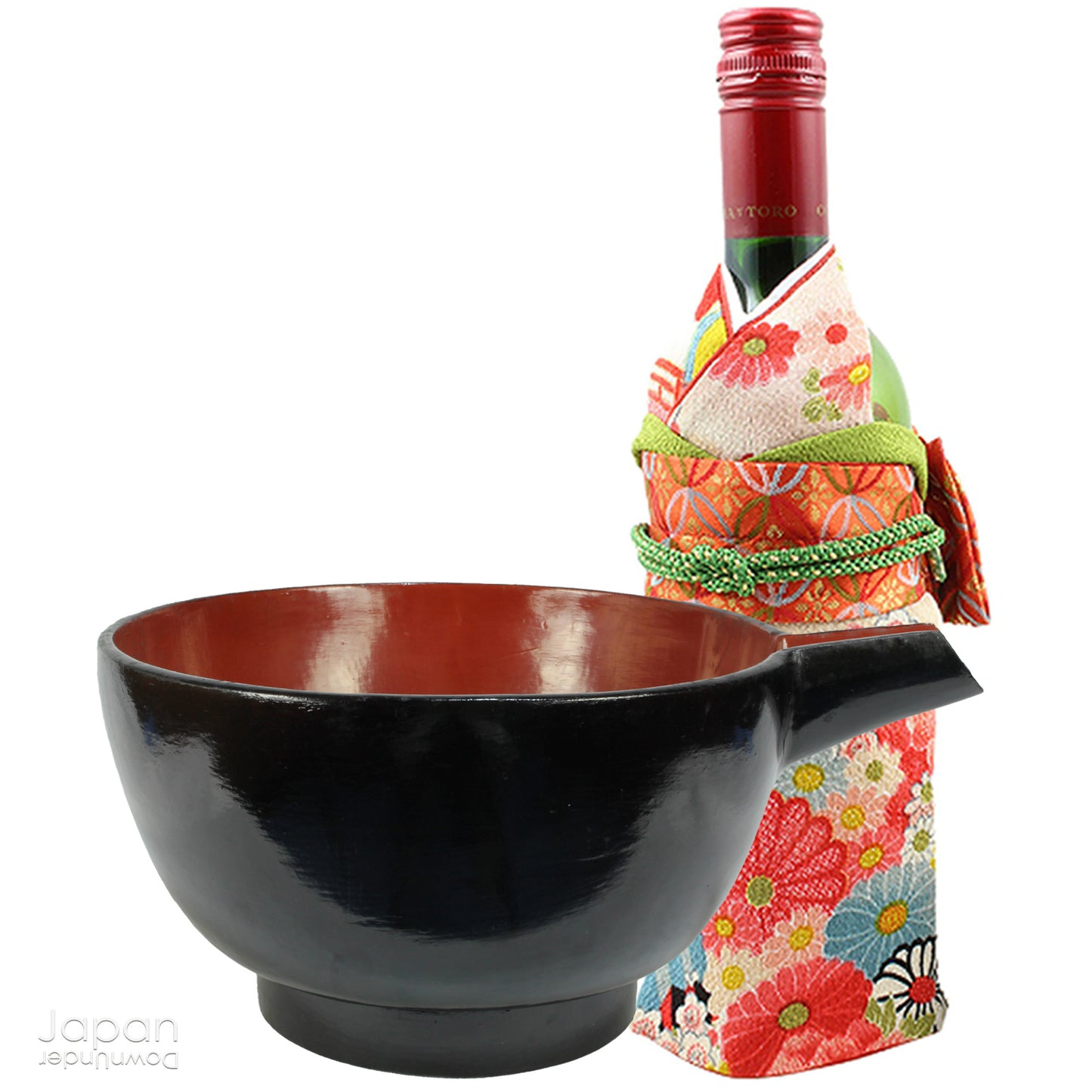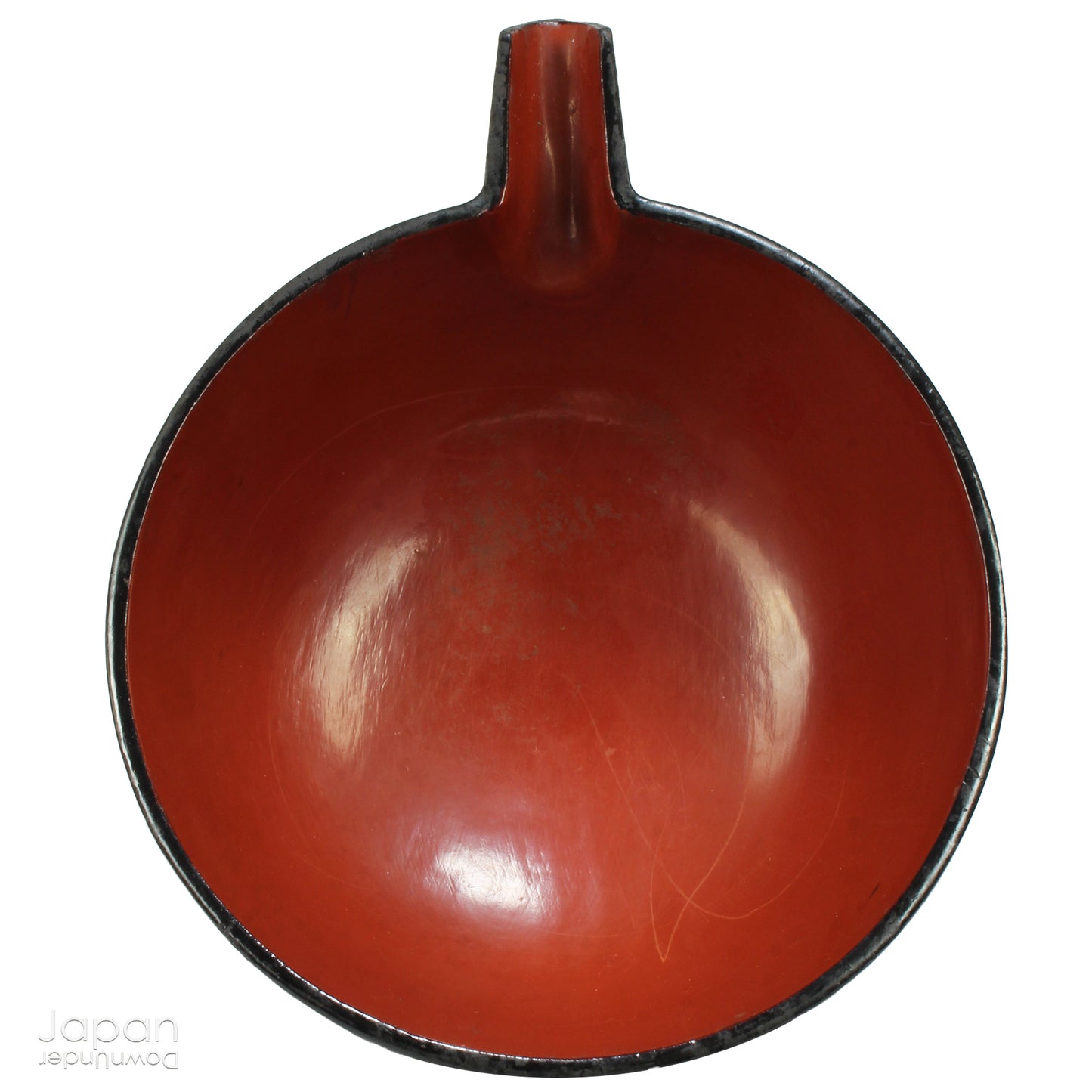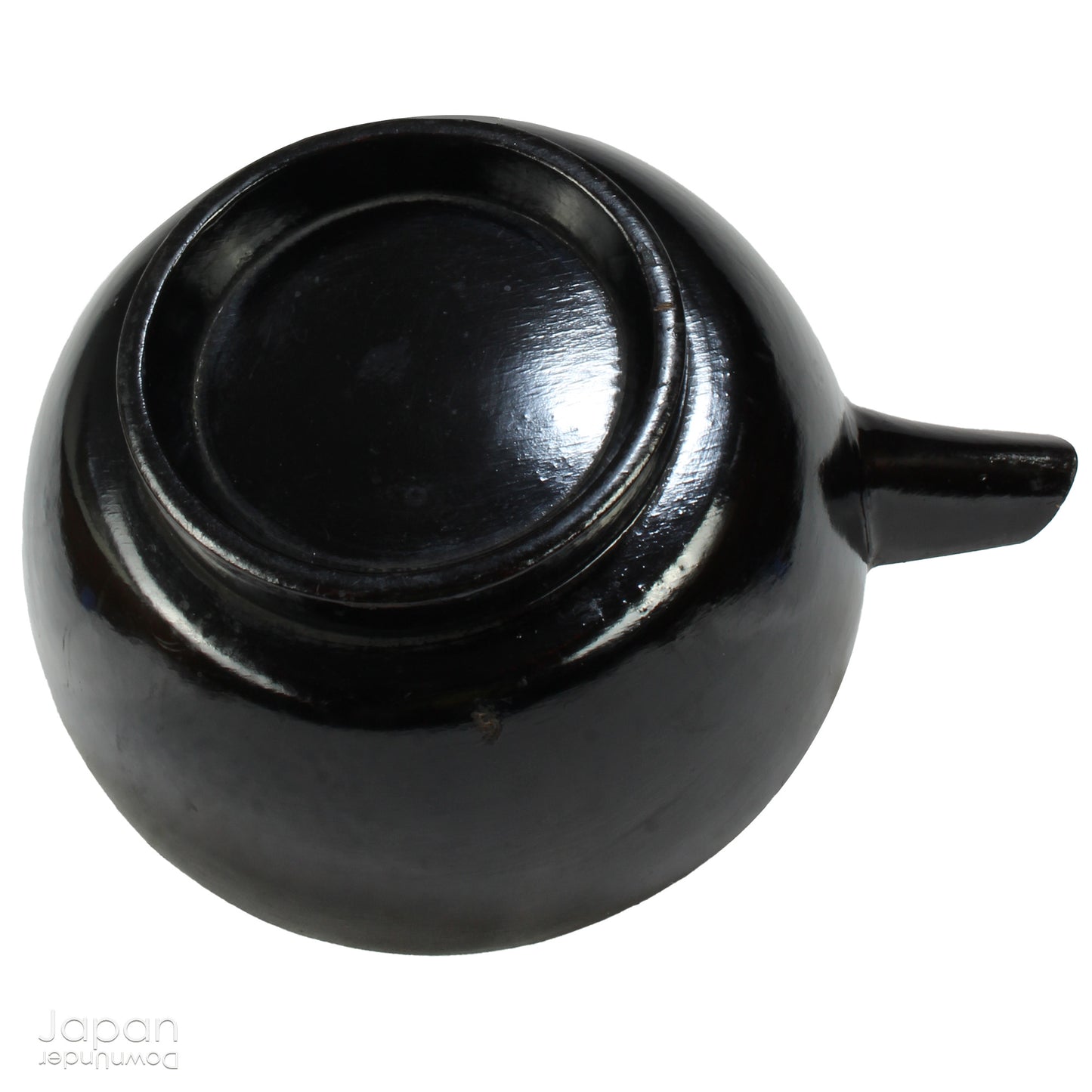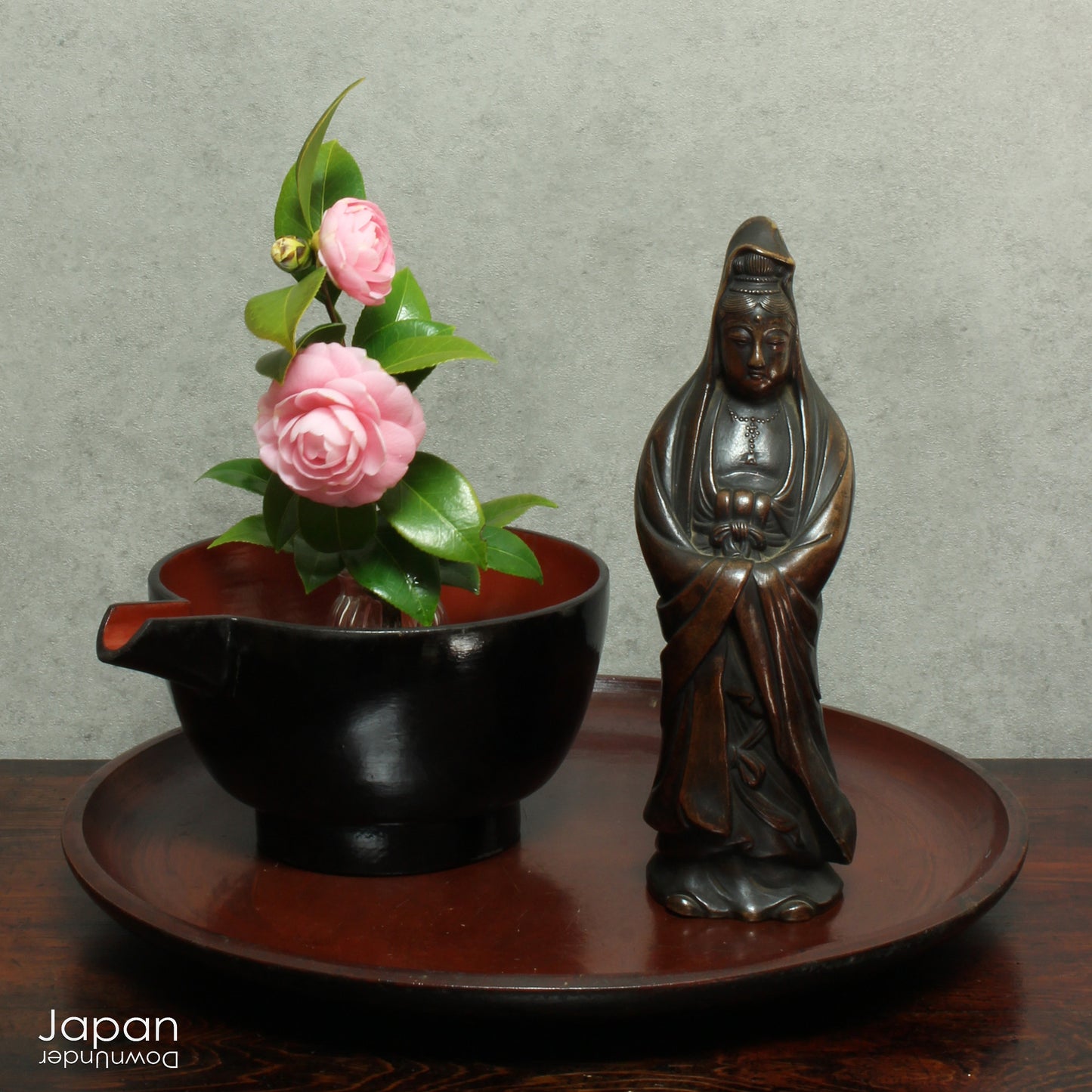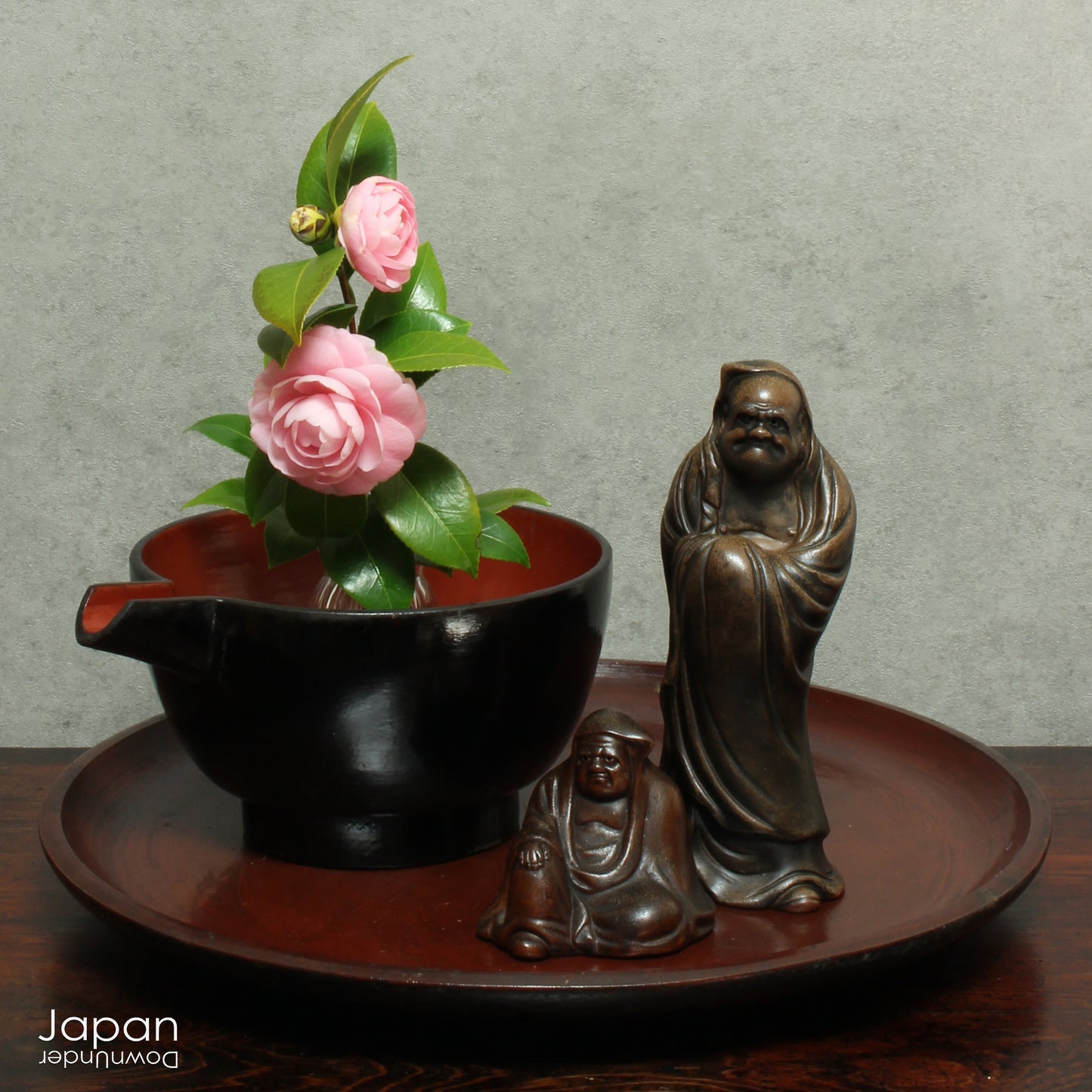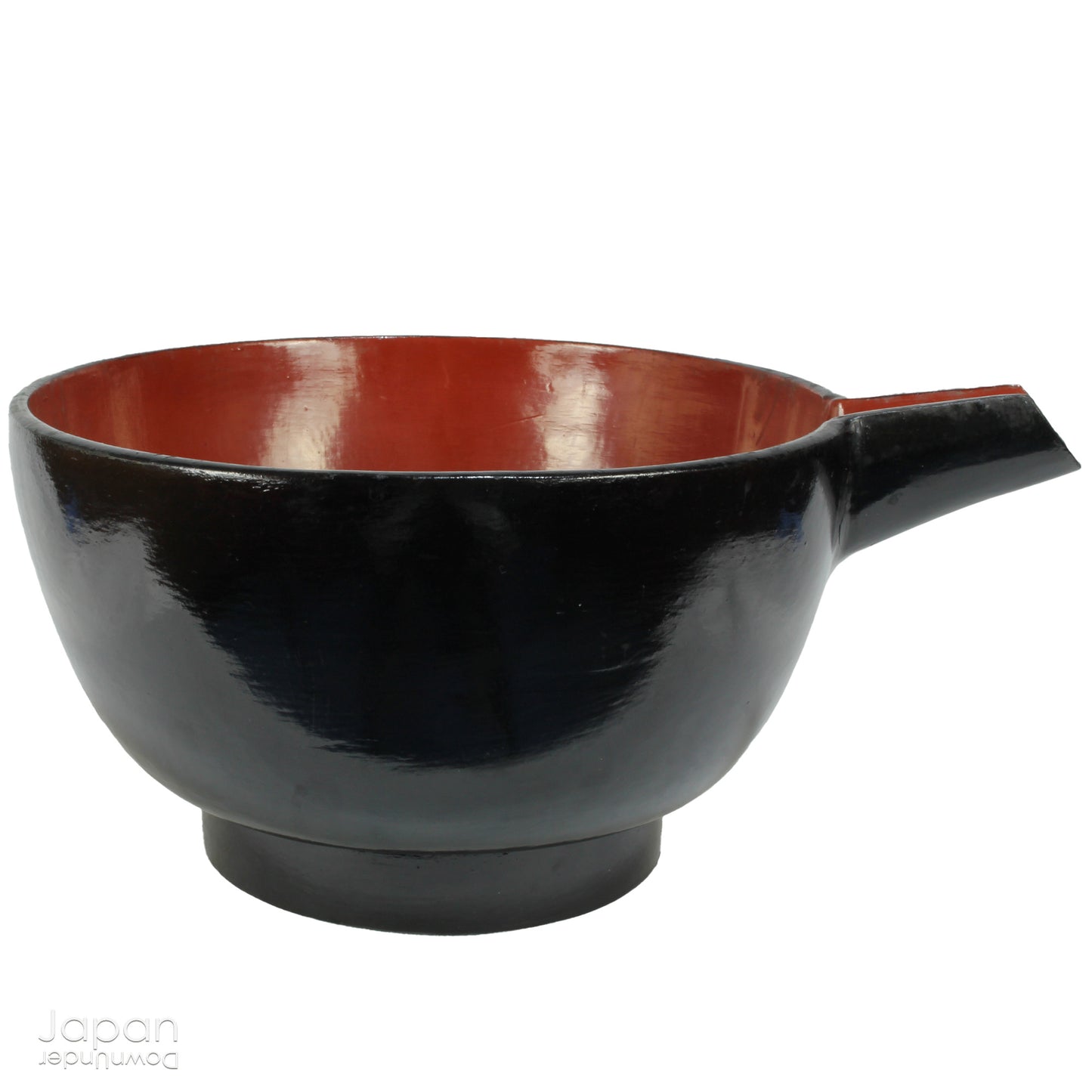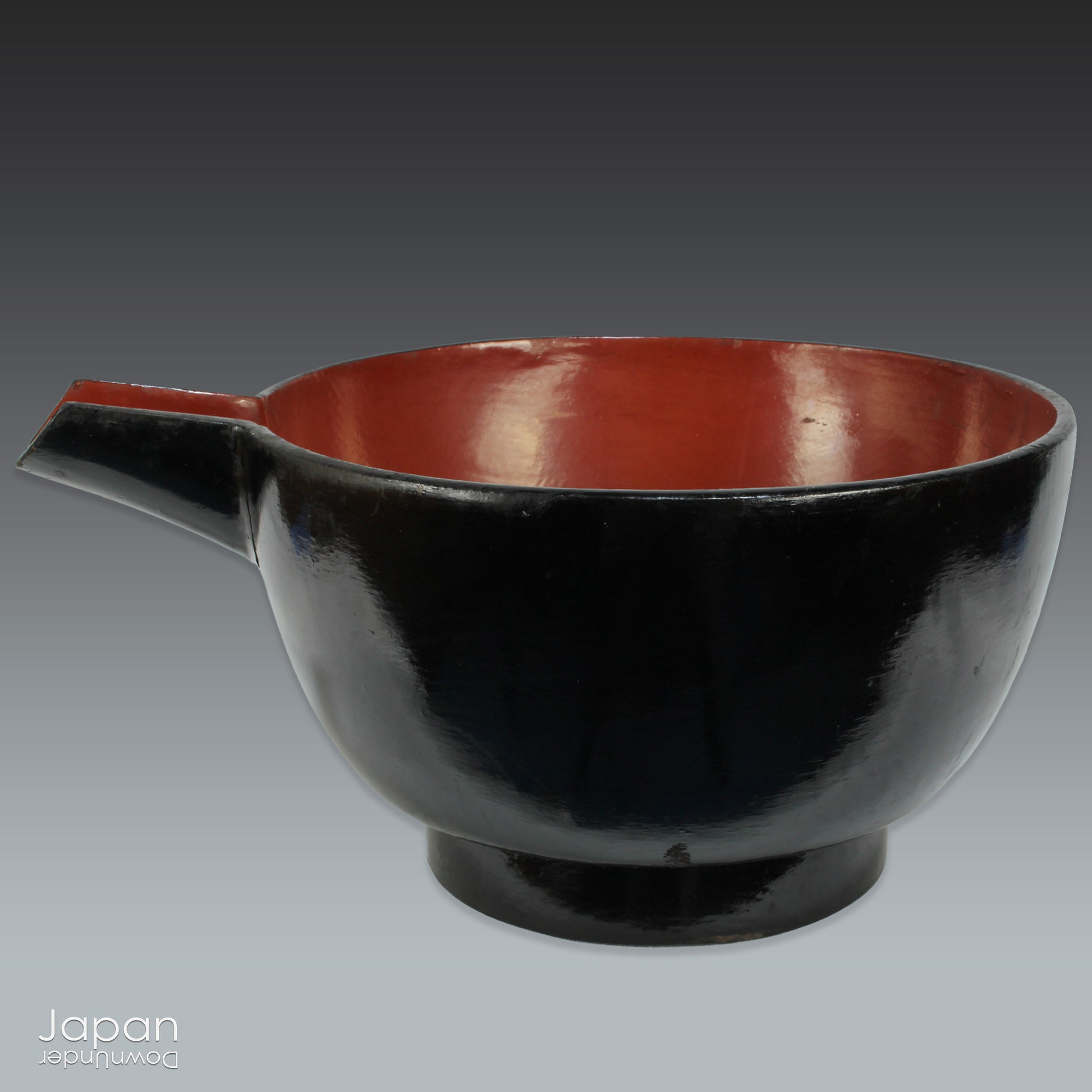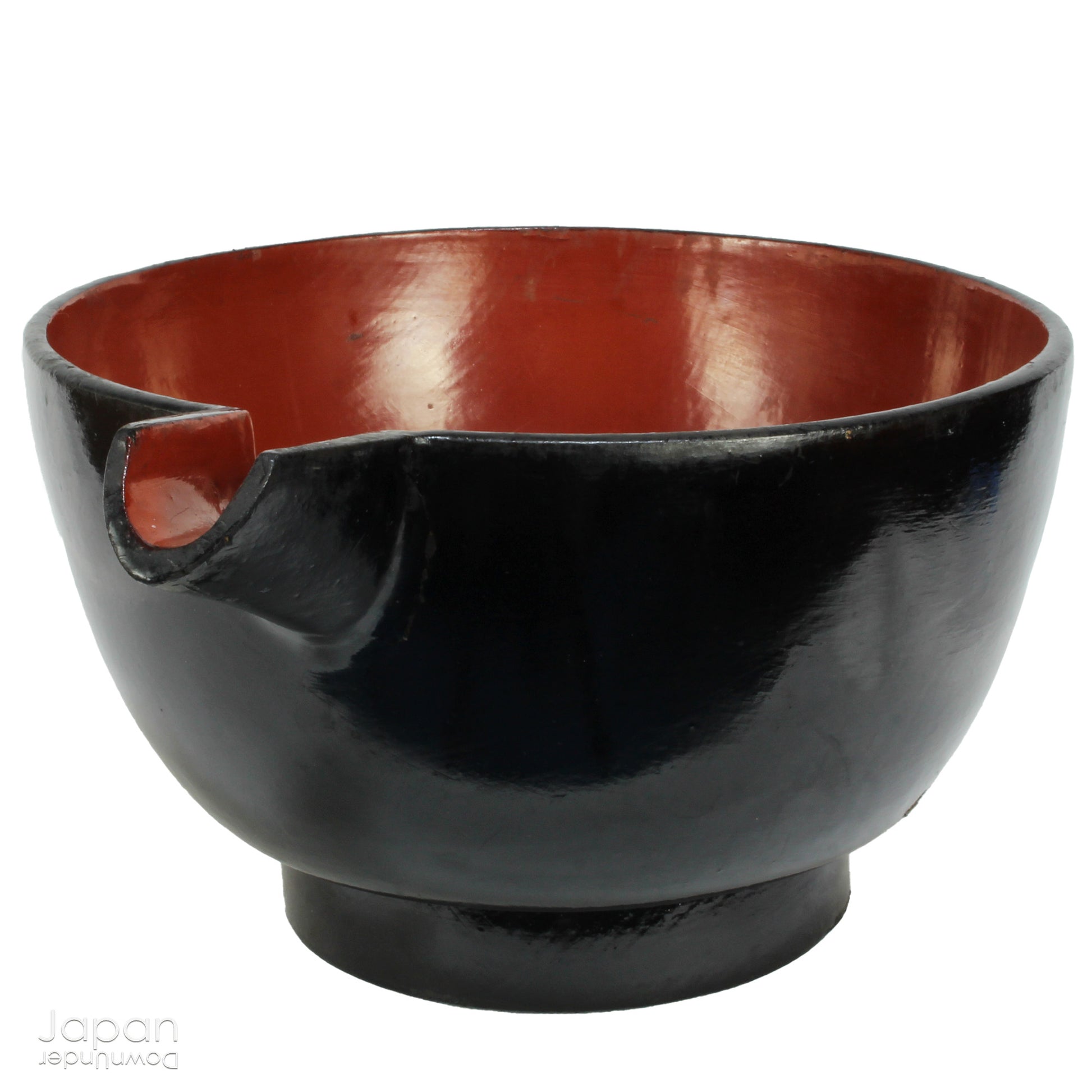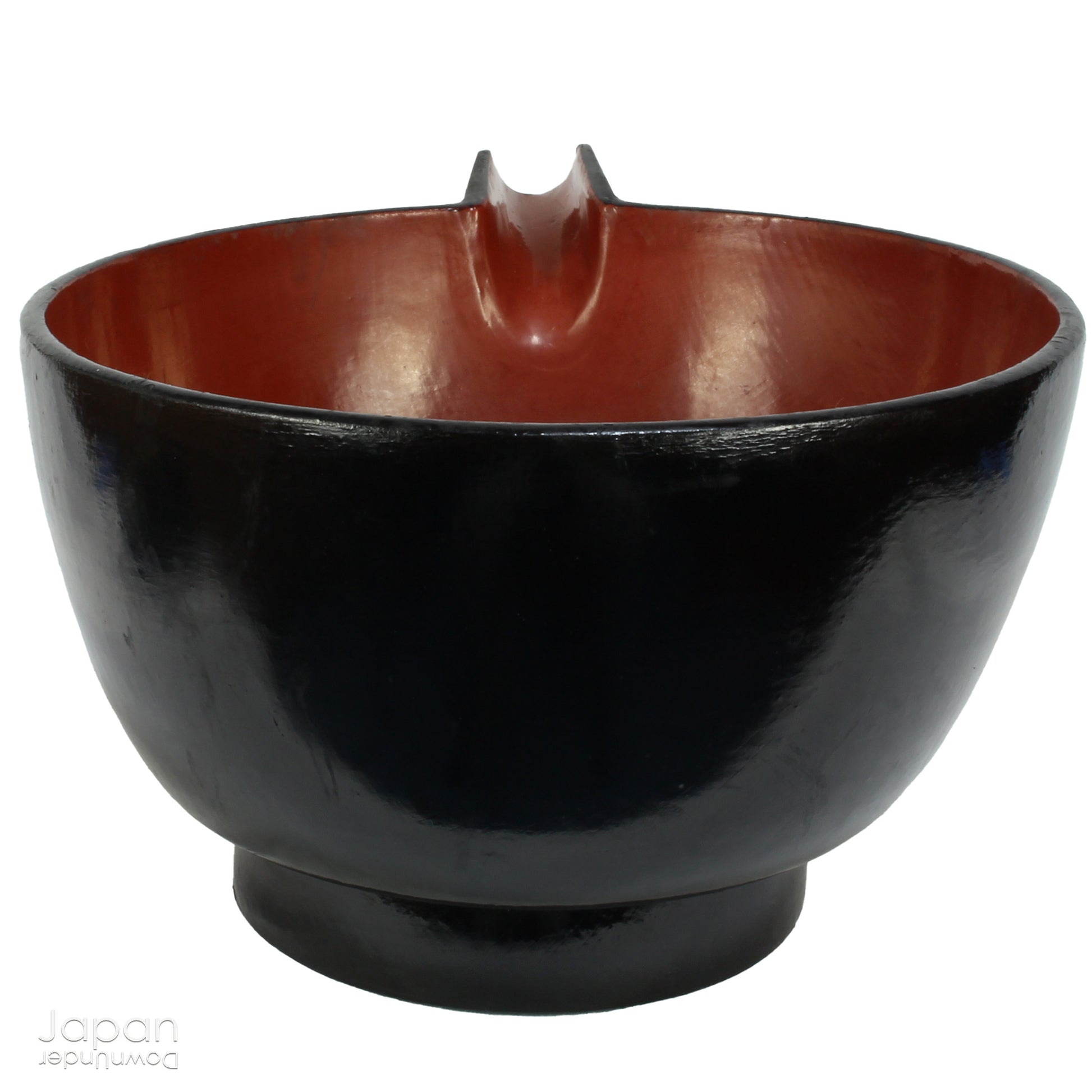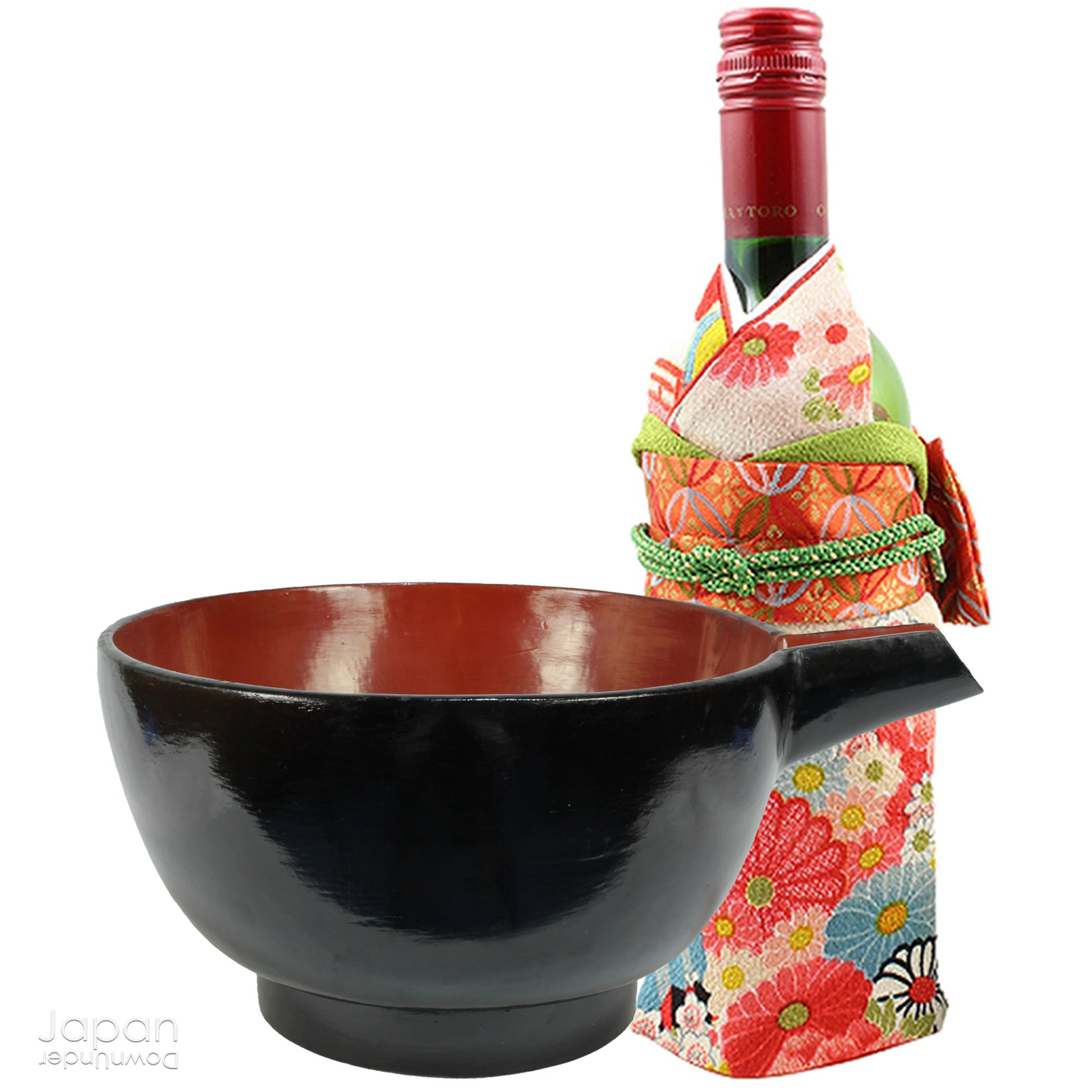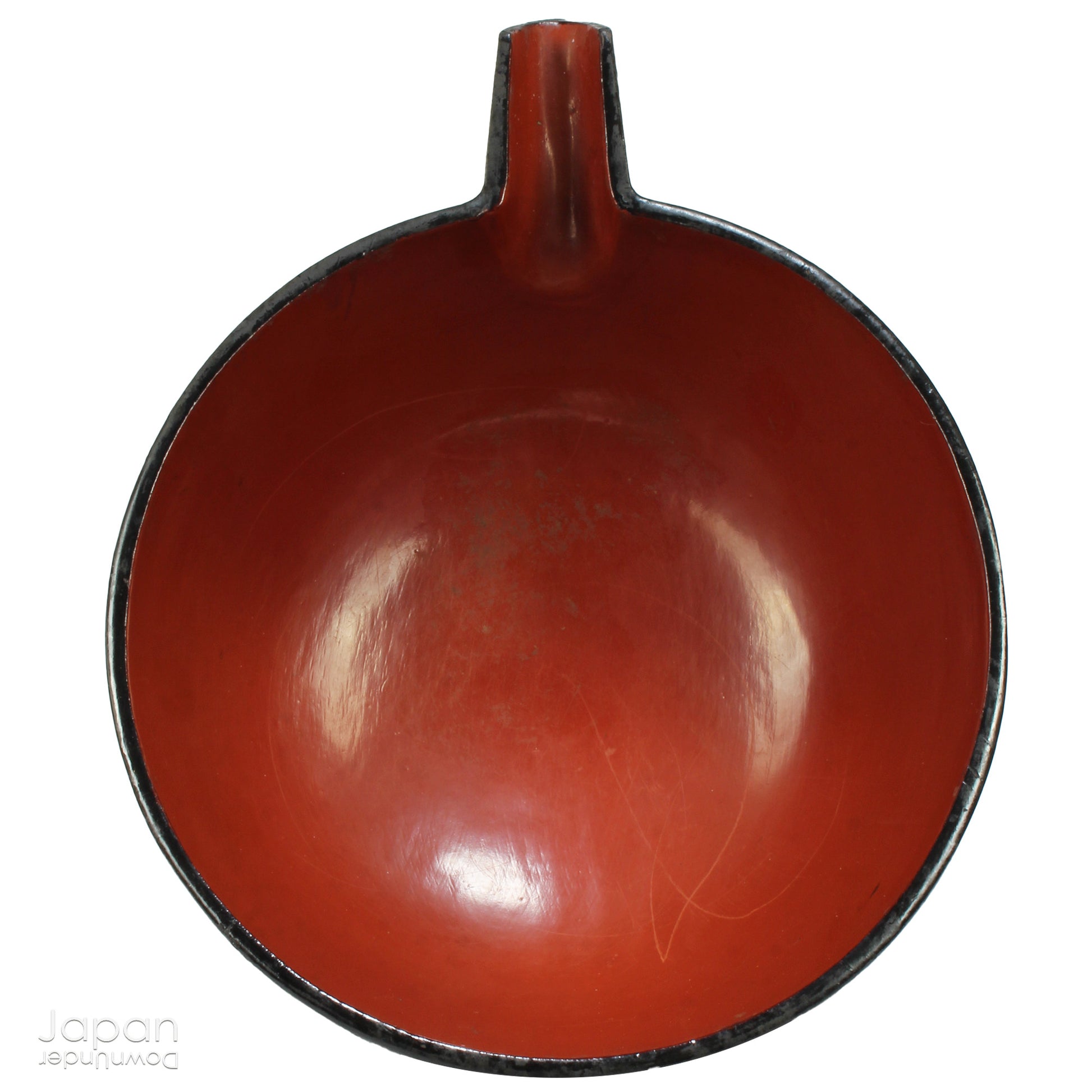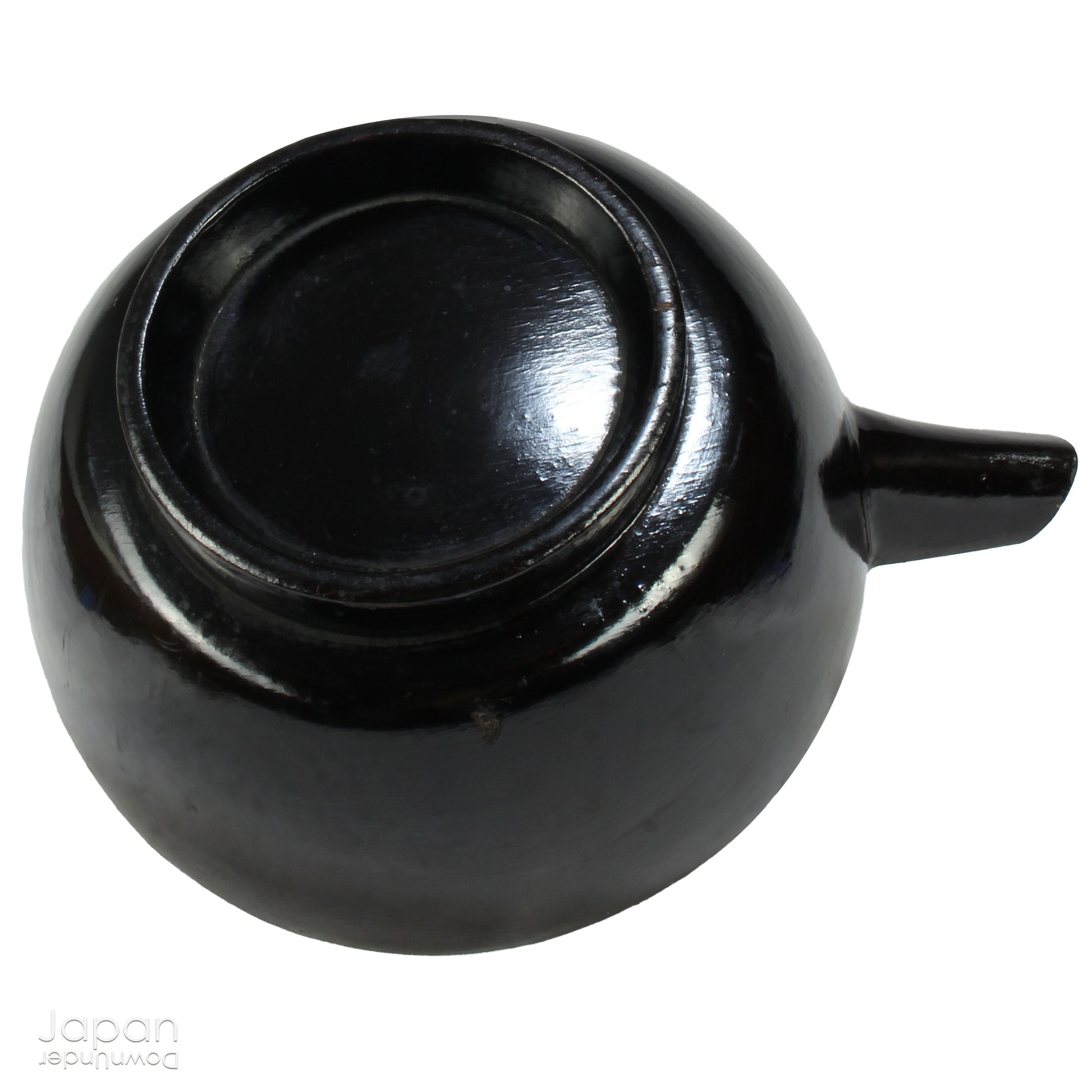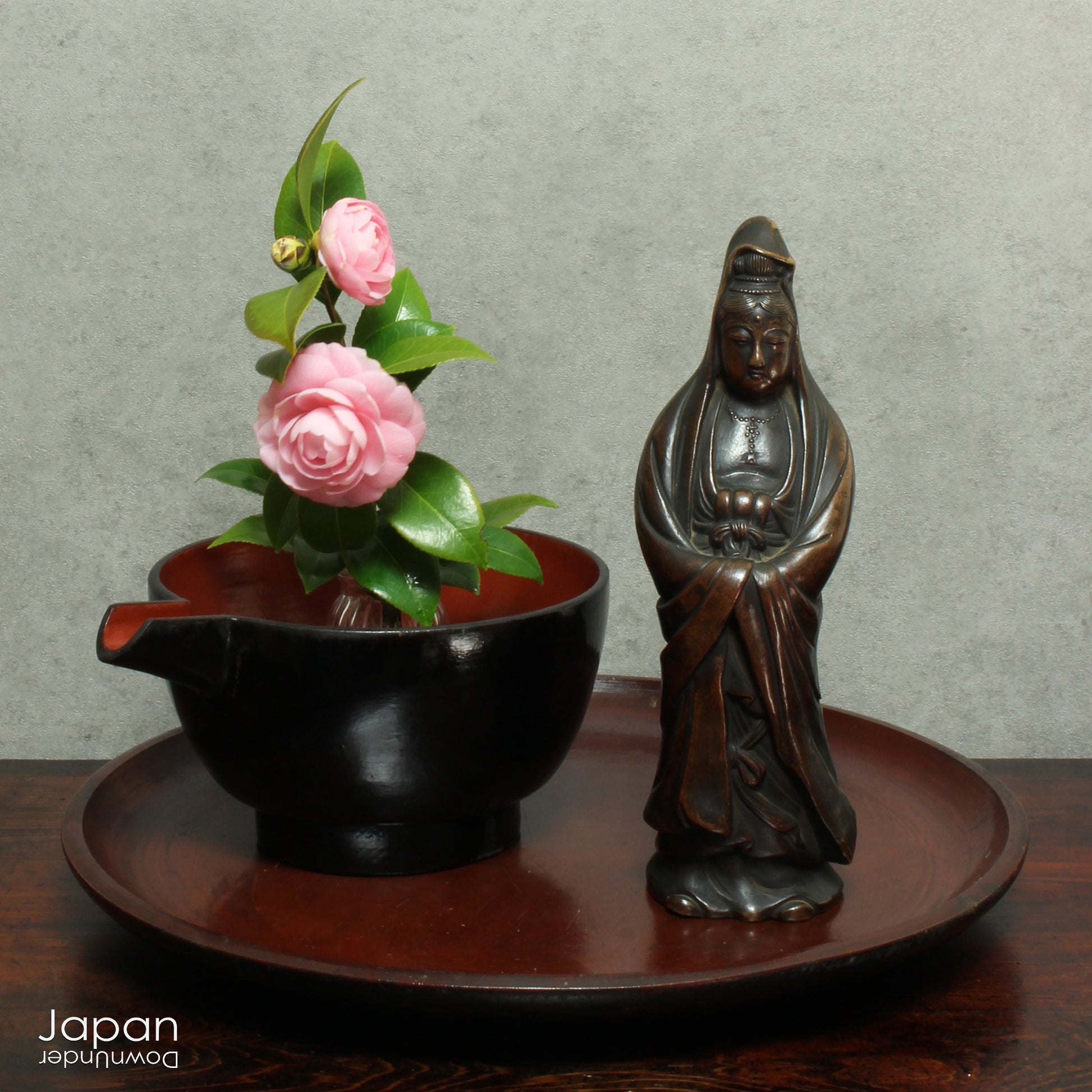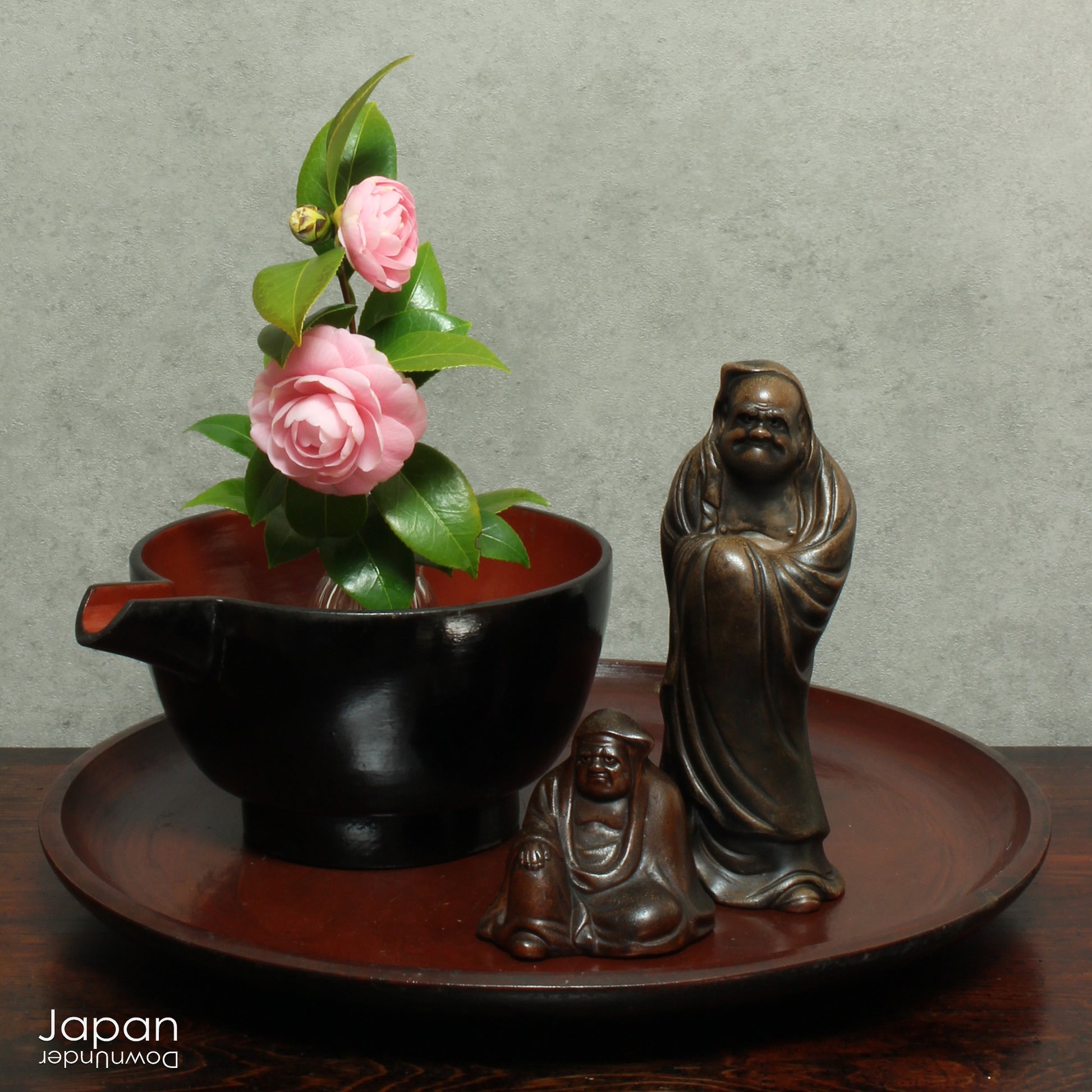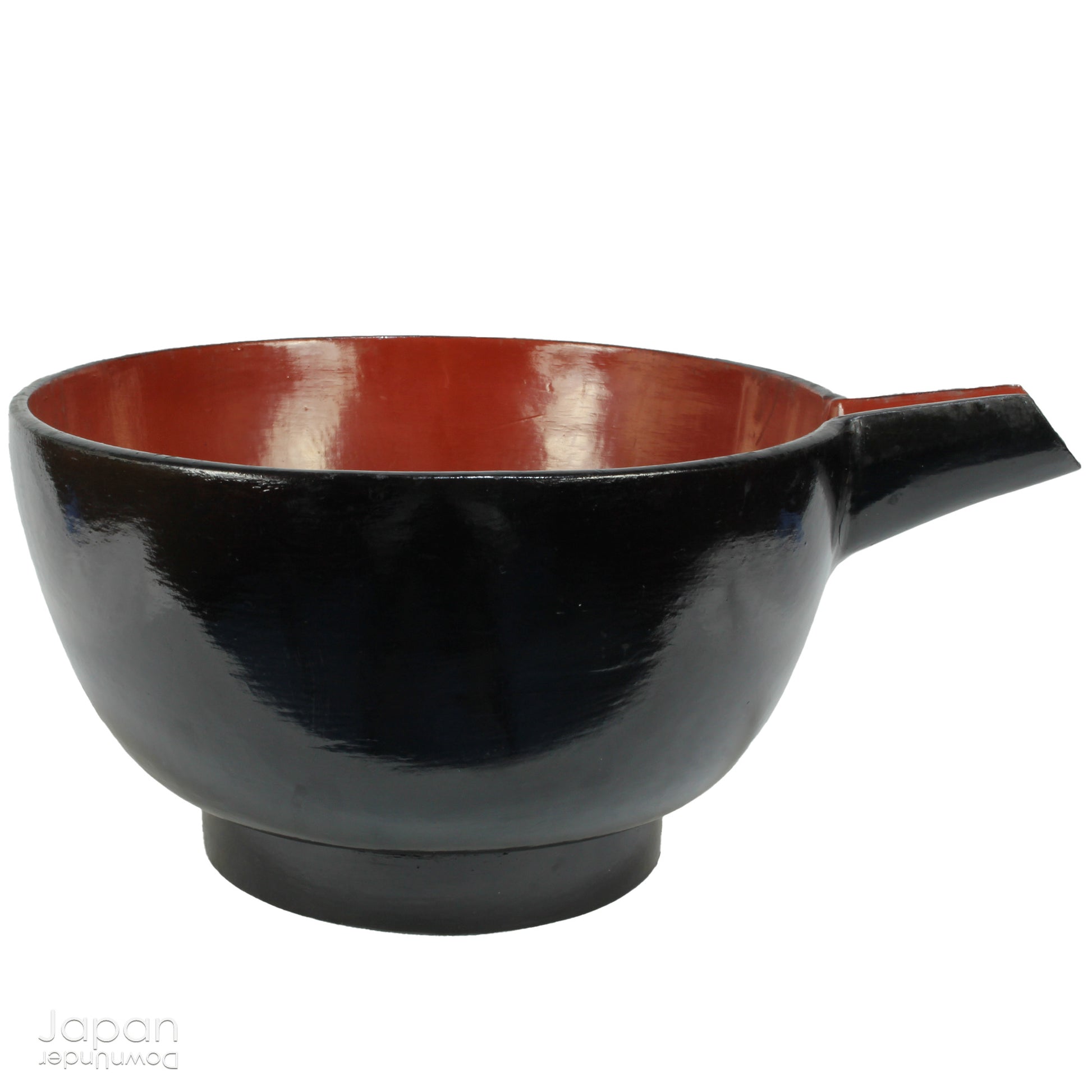JapanDownUnder
1800’s japanese folk art lacquer sake pourer - art object with beautiful patina
1800’s japanese folk art lacquer sake pourer - art object with beautiful patina
Couldn't load pickup availability
Love Japanese Style like We Do
A stunning 1800’s Japanese folk art lacquer sake pourer. This versatile piece doubles as a unique flower vase or beautiful art object, adding a touch of rustic charm to any decor. With the wonderful patina of use, it a truly one-of-a-kind treasure.
The Meiji era sake pourer is Johoji lacquerware and is named ’Katakuchi,’ meaning a one spout sake pourer. Johoji lacquerware is believed to have a history of some 1,200 years, initially being produced by the monks of the Tendaiji Temple. Known for its durability and beautiful black, and dark red color combination, it was intended for continued daily use by common people. As such there are signs of regular use adding to the beauty and warmth of this appealing piece.
Once regarded as humble, everyday objects in rural Japan, these kinds of folk art pieces found new appreciation through the Mingei (folk art) movement, founded by Soetsu Yanagi in 1926. Yanagi recognized the beauty in functional crafts, celebrating the honest and unpretentious artistry that flourished in harmony with nature. Today, these pieces are highly sought after, treasured for their unique, understated elegance.
This larger sized piece boasts a striking red and black color palette, showcasing a beautifully worn patina that tells the story of years of use. With the warm hues and rich texture, this Katakuchi exudes a sense of timelessness and character. Its classical shape and graceful presence make it a conversation piece, embodying a deep connection to both Japanese tradition and folk art history.
The katakuchi is in good structural condition. The gentle signs of age - light scratches, small dents, and a slight surface crack in the lacquer at the spout - only add to the charm and authenticity of this piece, enhancing its rustic beauty.
- measures around 25 cm (9.8”) to spout x 19 cm (7.5”) in diameter x 12 cm (4.7”) tall.
- weighs 600 gm.
(listing for katakuchi only)
SHIPPING INFORMATION
- please read our shipping notes in our shipping policy.
- we use recycle packaging and wrap for safety, rather than appearance.
ABOUT OUR VINTAGE, ANTIQUE AND OTHER ITEMS
We list pieces we feel are worthy of display. There may be scratches, dents, fading and signs of wear and tear. We try to explain the condition of each item exactly, but may miss something.
Information regarding the item and it’s age is obtained from dealers and our personal research. We do our best to give you the correct information but please be aware that we cannot guarantee this information.
Please message us prior to purchase with any questions you may have about our products.
KATAKUCHI
A katakuchi (mouth on one side) is a spouted bowl traditionally used for serving sake. Katakuchi have a long history in Japan with the first earthenware katakuchi being excavated from ruins in Heijokyo, the capital of Japan during the the Nara Period (710-794). Since then, katakuchi have been made of various materials. Ceramic, lacquer, wood, porcelain, tin, and glass katakuchi can be found.
When drinking sake Japanese people usually use a tokkuri or bottle to pour the sake. A katakuchi has a wide mouth, so not only can the taste of the sake be enjoyed, but also the wonderful smell and tactile feel of the bowl.
These days katakuchi are used in many ways, limited only by ones imagination. There are many sizes and they are great for preparing Japanese sencha tea, serving and pouring dressings and sauces and all kinds of liquids. Besides the pouring function, the larger ones can also double as lovely serving bowls for many kinds of food. They can even be used as a pretty vase!
JOHOJI LAQUERWARE
Johoji lacquerware, produced in Iwate Prefecture, is believed to have a history of some 1,200 years, beginning with lacquerware produced by the monks of the Tendaiji Temple.
The characteristics of this lacquerware are it’s durability and the beauty of the black, vermilion, and dark wine-red that are it’s dominant colors. It is intended for continued daily use, and the more lovingly it is handled, the more it will reveal it’s inherent natural luster.
The techniques of Johoji lacquerware have been widely applied in the restoration of the Kinkakuji (Golden Pavilion) in Kyoto and the Toshogu Shrine at Nikko.
MINGEI
Mingei are the tools and utensils that were used daily by the common people in Japan. They were inexpensive, simple and functional. Usually produced by hand, in large quantities, their artists were anonymous. They became representative of the local area where they were produced.
The word Mingei combines “min” meaning common people and “gei” meaning art - the art of the common people. It was coined by the Japanese philosopher Sōetsu Yanagi. He found beauty in ordinary crafts for daily use and argued that true beauty could be found only in the objects made by unknown people, in a spirit of selfless innocence and in close harmony with nature.
Share

